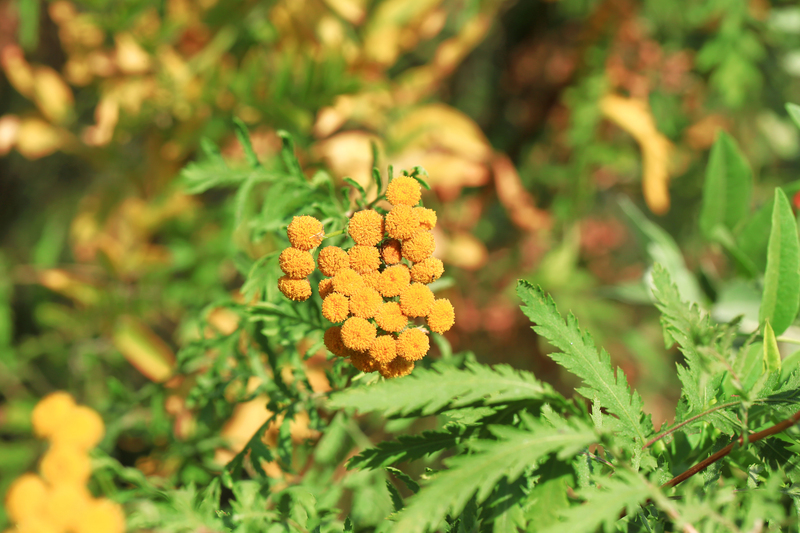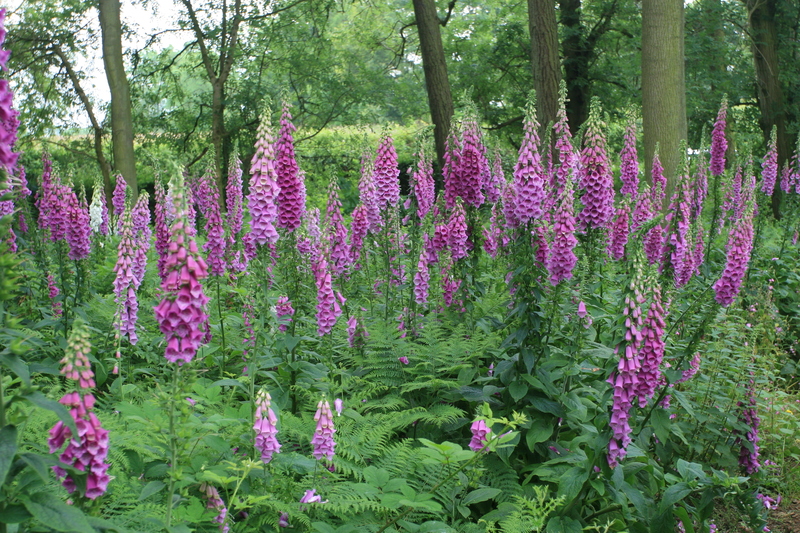Nurturing a Love for Nature with a Kid-Friendly Garden
Posted on 11/09/2025
Nurturing a Love for Nature with a Kid-Friendly Garden
In a world dominated by screens and indoor activities, it's more important than ever to encourage children to connect with the natural environment. One of the best ways to do this is by creating a kid-friendly garden at home. Not only does a garden provide a hands-on science lab, but it also fosters a love for nature, enhances creativity, and promotes well-being for the entire family. In this comprehensive article, you'll discover practical tips, inspiring ideas, and expert insights on nurturing a love for nature through a kid-centric garden oasis.
Why Creating a Garden for Kids Matters
Kids are naturally curious and imaginative. When given the space and tools to explore a child-focused garden, their world blossoms in unexpected and delightful ways. Gardening with children offers numerous benefits:
- Physical Development: Digging, planting, and watering are great for coordination and fine motor skills.
- Emotional Growth: Time outdoors reduces stress and builds resilience.
- Learning Opportunities: Gardens are rich with teachable moments--biology, weather, math, and responsibility.
- Environmental Stewardship: A personal connection with plants and animals fosters respect for the earth.
By transforming a backyard space into a nature-friendly play zone, parents and caregivers can help kids develop values that will last a lifetime.

Designing Your Kid-Friendly Garden
The secret to a successful children's garden is to make it as inviting and accessible as possible. No matter your available space--whether it's a sprawling backyard or a small patio--there are creative ways to cultivate curiosity.
Essential Features of a Kid-Focused Garden
- Safe Play Areas: Choose non-toxic plants and use mulch or grass to cushion little knees.
- Easy Access: Raised beds and container gardens put plants at eye-level for small children.
- Interactive Elements: Incorporate stepping stones, paths, or tunnels for adventure and exploration.
- Natural Diversity: Mix vegetables with flowers and herbs to attract pollinators and keep kids interested.
- Shade and Shelter: Plant trees or install small tents where children can rest out of the sun.
Planning with Kids in Mind
When setting up a child-enthusiast garden, involve your kids in every step. Let them help design the layout, choose what to plant, and decorate the area. This sense of ownership makes the garden more special and inspires active participation.
- Sketch the garden layout together on paper.
- Pick seeds and seedlings that represent your child's interests (sunflowers, pumpkins, strawberries, etc.).
- Set up fun decorations--painted rocks, wind chimes, or garden gnomes.
*Remember: The messier and more whimsical, the better! Embrace an atmosphere of gentle chaos where experimentation is encouraged.*
Choosing the Best Plants for a Children's Garden
Plants are the stars of any garden, but not every plant is suitable for young gardeners. Prioritize safe, fast-growing, and visually engaging species to sustain your child's interest and ensure their safety.
Top Picks for Kid-Friendly Gardening
- Sunflowers: Fast growers with bright blooms and towering stalks.
- Cherry Tomatoes: Sweet to taste, easy to pick, and fun to watch ripen.
- Snap Peas and Beans: Quick to sprout, provide instant gratification, and can be eaten straight from the vine.
- Strawberries: Kids love to harvest and eat these bright red fruits.
- Pumpkins: Perfect for autumn festivals and creative carving projects.
- Marigolds and Nasturtiums: Colorful flowers that are also edible and attract butterflies.
- Herbs like Mint, Basil, and Chives: Add fragrance, flavor, and texture for an interactive sensory garden.
- Pro Tip: Avoid potentially harmful plants such as foxglove, oleander, or castor beans. Always research or ask your local extension office before planting new species around children.
Activities to Cultivate Curiosity and Joy
Beyond simply planting, a nature-based children's garden is a fantastic setting for year-round activities that keep little ones engaged. Try the following fun and educational projects:
Garden Crafts and Creations
- DIY Bird Feeders: Use pinecones, peanut butter, and seeds to attract local wildlife.
- Leaf Rubbings: Place paper over leaves and color with crayons to reveal stunning patterns.
- Stepping Stones: Mold and decorate concrete stones with marbles, handprints, or found objects.
- Potion Mixing: Safe "potions" mixed from flowers, water, and mud encourage imaginative play.
Hands-On Learning Experiences
- Seed Starting: Let kids sprout seeds in clear cups to watch roots grow.
- Composting: Teach the cycle of decomposition with a simple compost bin or worm farm.
- Nature Journaling: Give children notebooks to record observations, sketch plants, and note insect visits.
- Garden Scavenger Hunts: Create checklists of things to find--different leaf shapes, bugs, or blooming flowers.
Encouraging Responsibility and Environmental Stewardship
A kid-centric green space isn't just a place to play--it's also an ideal backdrop for teaching responsibility and sustainability. Children can participate in regular garden tasks such as watering, weeding, and harvesting. This empowers them to take pride in their work and builds strong life skills.
- Create simple routines: Assign "garden jobs" on a rotating basis; use visuals or chore charts for younger kids.
- Discuss eco-friendly practices: Teach about water conservation, pollinators, and organic gardening.
- Celebrate successes: Mark harvest days, blooming flowers, or the first sighting of a butterfly with mini-garden parties.
Making Gardening an Ongoing Adventure
To truly foster a lifelong love of nature, keep your children's garden an active and evolving project:
- Rotate Crops: Change what you plant each season for variety and interest.
- Build New Features: Add fairy houses, mud kitchens, or a bug hotel as your child's interests change.
- Invite Friends: Organize garden days with neighbors or classmates for social fun and shared learning.
Whatever the weather, encourage children to explore daily--even on rainy days when worms are out and puddles invite jumping.
Incorporating Garden Lessons into Everyday Life
Gardening is a gateway to many life lessons. Here are just a few ways you can connect your family's garden to other areas of growth and learning:
- Cooking: Use herbs or vegetables from your plot in family meals to show the "garden to table" journey.
- Storytelling: Read books about plants, bugs, or fictional garden adventures together outdoors.
- Art Projects: Use pressed flowers or painted rocks from the garden in crafts and gifts.
- Science Experiments: Study pollinators, measure plant growth, or look at soil samples under a microscope.
Sensory Gardens: A Special Kind of Kid-Friendly Green Space
For children with sensory needs--or just to enhance your child's multi-sensory experience--consider designing a sensory garden. These spaces are intentionally planted and styled to stimulate all five senses, making them especially engaging for curious children.
Ideas for Sensory Features
- Textural Plants: Fuzzy lamb's ear, aromatic lavender, and crunchy grasses invite touch.
- Noisy Elements: Wind chimes, bamboo clackers, or plants that rustle in the breeze add sound.
- Bold Colors: Mix vibrant flowers and varied foliage for a colorful feast for the eyes.
- Scents and Flavors: Sweet-smelling flowers, and edible herbs like mint or lemon balm for taste and scent.
- Water Features: A small fountain, birdbath, or even a mud puddle provide tactile and auditory stimuli.
*Tip: Sensory gardens can be especially beneficial for children with disabilities, autism, or anxiety, providing a comforting, predictable, and joyful retreat.*
Tips for a Safe and Welcoming Kid's Garden
While adventure should be encouraged, safety precautions are just as essential when you nurture a nature connection for kids in the backyard. Here's how to create a secure and inviting environment:
- Check for Hazards: Regularly inspect for prickly, poisonous, or allergenic plants.
- Use Child-Friendly Tools: Invest in lightweight, non-toxic garden tools sized for small hands.
- Store Chemicals Safely: Keep all fertilizers, pesticides, and garden supplements locked away.
- Teach Boundaries: Establish rules for exploring unfamiliar areas or handling creatures.
- Install Fencing If Needed: Especially around ponds or compost heaps.
Inclusivity: Gardening for All Ages and Abilities
A kid-friendly garden should be a welcoming space for everyone, regardless of their age or ability. Here's how you can make your child-centered green haven as accessible as possible:
- Elevated Beds: Make gardening easier for children with mobility challenges by using raised planters or wide containers.
- Wide Paths: Ensure that paths are even and wide enough for strollers or wheelchairs.
- Adaptive Tools: Use ergonomic handles or adapted watering cans if needed.
- Quiet Spaces: Set aside a small bench or shady nook for quiet observation and relaxation.

Celebrating Your Kid-Friendly Garden: Making Memories
Don't forget to commemorate the journey. Mark milestones--your first strawberry harvest, a sunflower's towering growth, or a favorite bug sighting--with family photos, garden journals, or a scrapbook.
Host seasonal garden parties, invite grandparents or friends to see the progress, and always reinforce the message that nature is a magical and welcoming place for everyone.
Inspiring a Lifelong Love for Nature
Building a child-friendly garden is much more than a landscaping project. It's an invitation to slow down, observe, and partake in the wonders of the natural world together. By intentionally nurturing a love for nature with a kid-oriented garden, you're sowing seeds that will influence your child's values, habits, and happiness for years to come.
Whether your garden is big or small, simple or elaborate, its magic lies in the bond it creates between your child and the living world. So grab some dirt, dig together, and let nature's lessons flourish in your own backyard!
Further Reading & Resources
- Children & Nature Network: Connecting Children with Nature
- American Horticultural Society: Youth Gardening Resources
- Royal Horticultural Society (UK): School Gardening Support
Start your own journey in nurturing a lifelong bond between your child and the incredible world outdoors with a welcoming, exciting, and kid-friendly garden!

